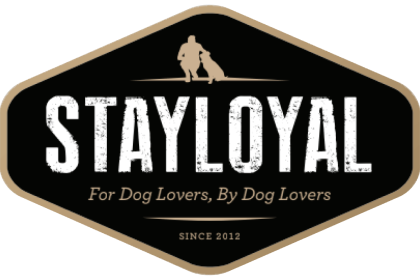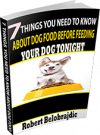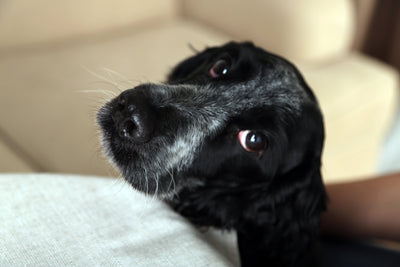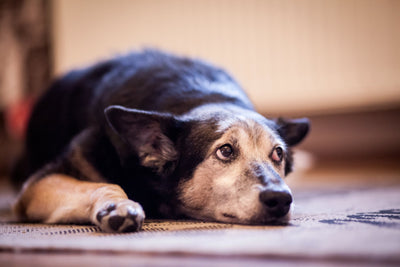Introducing Your Dog to Your New Baby (Hint: prep should start BEFORE you bring that baby home!)
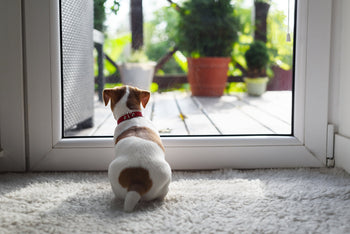
Adding a new member of your family is always an exciting time – whether it’s the two- or four-legged kind! A new baby changes everything in your house, and it is important to remember that includes your dog. Studies have shown that children who are exposed to pets when they are younger are less likely to have allergies. It teaches them empathy towards other creatures and, as they grow, responsibility. Movies and TV shows depict the loving dog that saves the baby or toddler, goes on adventures with the older kids and is a shoulder to cry on for the dramatic teen. But in real life, we hear the bad stories too. Unfortunate tragedies that occur because its easy to forget our calm, docile housemate is a predator with instincts. Here are some tips for introducing your dog to your new baby and to keep future interactions positive for everyone involved.
Changes
Dogs, like most animals, are creatures of habit. They prefer a set schedule. Fed at the same time, walked at the same time, you coming home at the same time. They live for routines. It makes them feel calm because they know what’s coming every hour. You may even notice your dog sleeps in certain spots the same time every day. If you have inadvertently given them a strict routine, and suddenly a baby is disrupting that – a parent is now home during the day, loud crying wakes everyone up in the middle of the night, the dog’s meal times now depend on when you have a moment to remember to feed him, walks are dependent on how much sleep baby and parent got the other day and if they can juggle stroller and leash at the same time – all of these changes all at once make for a stressed dog.
A stressed dog is more likely to snap at someone, including a baby.
The best way to combat this is to change up your dog’s routine. Don’t feed him at the same time every day. Walk in the morning some days, and evenings another. Maybe a parent stays home off and on during the day. Do this BEFORE the baby comes. (Honestly, this can help a dog with any change, not just a new baby!)
Noises
Babies cry. A LOT. To a dog, that crying, screaming infant sounds a lot like prey. You think it’s loud on your ears, imagine having the ears of a dog! For many dogs, it is enough to bring out their prey instinct. You can help your dog get used to crying (again BEFORE you bring your baby home!). There are lots of ways you can do this. For example, play YouTube videos of infants crying (start with the volume low). Reward your dog for calm behaviour. If at any time your dog gets upset, you need to wait for them to quiet down, and then lower the volume. Do not lower the volume while your dog is acting up, or that will teach them that they can make the noise stop by reacting.
Another option is one of those realistic baby toys. These are great because they look like a baby, sound like a baby, and you can add baby powder to add scent as well. Teaching your dog to be calm around the fake baby will help him immensely when the real deal arrives.
NOTE: If your dog has not been around even older children, it would be a great idea to take them to parks where they can see kids running, screaming, laughing, etc. If your dog reacts, it may be time to get the help of a dog trainer to address the problem before your baby comes.
Introductions
When your baby does come home, don’t rush introductions! Feel your dog out, watch for signs of stress, reactivity (barking, whining, displacement behaviours such as chewing on things your dog normally would not, going to the bathroom in the house, etc.) Any behaviour out of your dog’s normal temperament should be noted. If your dog does seem stressed, try to keep baby and dog separated – better safe than sorry! And get the help of a dog trainer.
Remember, dogs are not quite sure what that screaming being is that you just brought home, and your baby can bring out their predatory instincts. Babies and toddlers also make sudden movements and are “grabby” with their hands, which can startle a dog. A pulled ear or tail can also cause enough pain that your dog wants to snap as well. Startled or hurt dogs often bite, especially if they are already stressed from changes in their routine, constant crying, etc.
If your dog seems calm, no signs of arousal or stress, that’s great. Start with slow introductions (like letting your dog sniff your babies’ dirty clothes and blankets) before actually getting to sniff the baby. And again, that sniff should happen at a safe distance. Keep an eye on your dog, as they can go from calm to stressed in less than a second. That’s how tragedies happen. If you are not sure what to do, a dog trainer really is your best resource. And having a second or third pair of hands around when doing the introductions is always a good safety precaution.
At the end of the day, it’s better to be safe than sorry.
Never leave your dog alone with your baby and don’t let them sleep together. It makes for such a sweet photo, but a dog that is jarred awake by a baby screaming, getting kicked by a toddler’s leg or even the sound of the doorbell, may reach out to bite whatever is closest…including your child. Bigger dogs can also roll over and accidentally harm your baby, so it’s just not a good idea. There will be plenty of time for candid shots of your dog and child as they grow up together. When it comes to dogs and babies, the old adage “an ounce of prevention is worth a pound of cure” was never truer.
